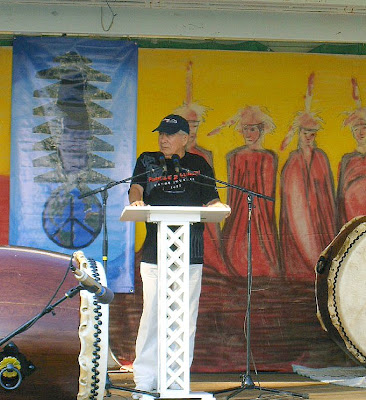1.jpg)
Onondaga Nation
The Roots of Peacemaking
An Afternoon of Lessons Held on the Shore of Onondaga Lake, the Birthplace of Western Democracy
In the new ecology-based documentary “The 11th Hour”, Onondaga Nation Faithkeeper, Chief Oren Lyons, speaks words of warning to all humankind: "The Earth has all the time in the world. We don't."
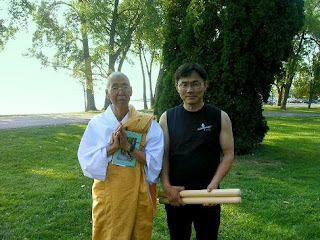112.jpg)
Chief Lyons' passionate admonition encompasses the words that Central New Yorkers have heard many times from the international activist for Native sovereignty. Once again last week, the tribal elder spoke about his concerns about the state of the local and global environment to a diverse group of people from the Onondaga Nation and Central New York along with citizens from as far away as Kyoto, Japan.
Supported and organized in large part by the Onondaga Nation and Syracuse University’s Department of Religion and Native American Studies, the Roots of Peacemaking gathering at Onondaga Lake park in Liverpool, N.Y. was billed as a conference on indigenous values at the birthplace of democracy at a time of global crisis. Other supporters included NOON (Neighbors of the Onondaga Nation) and the Center for Native People and the Environment (SUNY/ESF).
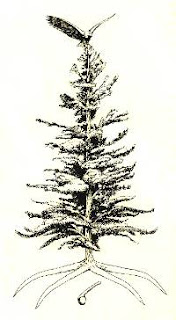 The event was symbolically held on the International Day of Peace, September 20 at Onondaga Lake Park in Liverpool, N.Y. There were Haudenosaunee (Six Nations) speakers, there was music and dancing, along with a traditional water ceremony for peace. Before introducing the day's speakers, Syracuse University associate professor of Indigenous Religions of the Americas Phil Arnold spoke about renowned historian of world religions Huston Smith and the focus he'd placed upon sacred places after his discussions with Native American leaders in his famous work "A Seat at the Table." From the shores of Onondaga Lake well over a thousand years ago a great message was given. Democratic principles were installed. What's best about democracy happened at Onondaga Lake many generations ago and that democratic message has been spread around the world.
The event was symbolically held on the International Day of Peace, September 20 at Onondaga Lake Park in Liverpool, N.Y. There were Haudenosaunee (Six Nations) speakers, there was music and dancing, along with a traditional water ceremony for peace. Before introducing the day's speakers, Syracuse University associate professor of Indigenous Religions of the Americas Phil Arnold spoke about renowned historian of world religions Huston Smith and the focus he'd placed upon sacred places after his discussions with Native American leaders in his famous work "A Seat at the Table." From the shores of Onondaga Lake well over a thousand years ago a great message was given. Democratic principles were installed. What's best about democracy happened at Onondaga Lake many generations ago and that democratic message has been spread around the world.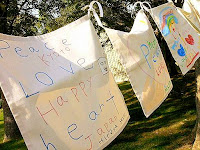111.jpg) Flags made by children halfway around the world were hung at a tent filled with guests next to a stage looking down at a set of Japanese traditional taiko drums. In some Buddhist traditions, the rumbling sound of the taiko drums represented the voice of Buddha. In Shinto shrines, the sound of the taiko accompanied prayers to heaven. Not only did the sound of taiko transcend the borders between the human and the divine, but could also fix firm boundaries here on earth.
Flags made by children halfway around the world were hung at a tent filled with guests next to a stage looking down at a set of Japanese traditional taiko drums. In some Buddhist traditions, the rumbling sound of the taiko drums represented the voice of Buddha. In Shinto shrines, the sound of the taiko accompanied prayers to heaven. Not only did the sound of taiko transcend the borders between the human and the divine, but could also fix firm boundaries here on earth. The drums and flags were brought by representatives from the Miho Museum in Kyoto, Japan.
1.jpg)
Speakers included Tonya Gonnella Frichner (Onondaga Nation, Snipe Clan), a New York City-based attorney whose academic and professional life has been devoted to the pursuit of human rights for Indigenous peoples. She was responsible for founding the Indian Law Alliance. Along with discussing the Onondaga Land Rights Claim currently in the U.S. Court system, Frichner spoke about a scarcely-reported recent landmark event at the United Nations, which was that the UN recently adopted a nonbinding declaration produced on behalf of the world's 370 million indigenous people. Even though itthe agreement is nonbinding, Ms. Frichner said, although far from what she really wanted to see, that the declaration could still give indigenous peoples a valuable tool. The agreement’s non-binding nature leaves indigenous peoples to rely upon the political will of nation states as each respective state creates a framework for working with their indigenous populations. An article from the Syracuse Post Standard by Mike McAndrew was the first to bring a mainstream report to the world about the declaration’s UN adoption.
From Mr. McAndrew’s article:
The United States, Canada, Australia and New Zealand voted against the declaration. [..]
[..] Though the landmark declaration may not help the Onondaga Nation in its land claim lawsuit against New York state, or settle the tax disputes between the state and its American Indian tribes, it is still important, [Chief Oren] Lyons said.
"This simply enlightens the world at large that there are indigenous people, and they do have rights. That, for the moment, is a little flash of light for us," he said.
The 12-page United Nations Declaration on the Rights of Indigenous People affirms the rights of indigenous populations to self-government in matters relating to their internal affairs and prohibits discrimination against them. It asserts that indigenous people have the right to maintain their distinct political, legal, economic, social and cultural institutions.
Robert Hagen, a U.S. delegate at the U.N., said the United States opposed the declaration because the text is so confusing it will result in endless debate over conflicting interpretations. He said the declaration appears to require states to recognize indigenous people's rights to lands they have traditionally owned and occupied without regard to other people's legal rights.
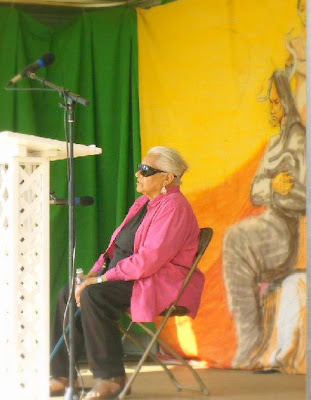
Onondaga Lake as the Birthplace of Western Democracy
Eel Clan Mother Audrey Shenandoah is known as 'Gonwaiannih' on the Onondaga Nation. She has previously described her place in the Onondaga society - a truly democratic society of which she and other Onondaga leaders consider to be a precursor and contributor to Benjamin Franklin's own ideas about what America democracy should be: "Within our society we maintain a balance between the responsibilities of the women, the responsibilities of the men, of the chiefs, of the faithkeepers. All the people in between have a special job to do to help to keep this balance so that at no time do we come to a place within our society where anyone has more power than any of the rest, for our leadership all have equal power. They must be able to listen to one another."
From the time she began to speak, it was clear that she meant to teach the audience based upon stories from her own life. She began by greeting everyone in attendance with the words "Nyawenha Skanonh," which is a Haudenosaunee greeting that means “I'm thankful you're well when we meet.” She said that thankfulness is at the center of the Onondagas' lives. She told a story about her garndson and how he recently reminded her that she told him every day as he was growing up, "Be good to people." She stressed the importance of always acknowledging others and told the audience that they should never ignore any person they encounter, as every person has value and a unique story to tell. Each spirit must feel connected to all other spirits, whether we're talking about the sprit of another person or the spirit of a tree. This brought the clan mother to thoughts about Onondaga Lake. "How it must have looked in those times so long ago," she said about the now-polluted lake, "It exists only in our imagination. It needs a lot of help from us - a helpful feeling for the spirit of the lake to bring about the help it needs. Rejecting the idea that the lake might be capped to trap the pollution below as a solution to restoring its waters, she said, "The lake must be cleaned from its soul."
She described how, over time, she came to fully understand the Haudenosaunee Great Law of Peace [Gayanehsragowah]. For those who are not familiar with it, the Great Law of Peace was recorded through oral tradition and its messages and teachings were written into the symbols and pictographs on wampum belts. "The English cannot tell the story the way the Onondaga language allowed me to see pictures in my imagination," Mrs. Shenandoah said as she spoke of the passing down of the story of the Great Law. Due to the everyday pressures and responsibilities of being a mother with young children at home, she was a mature woman before she began to regularly attend crucial Nation meetings while her husband stayed with their children. She describes the story as one that can only be understood over time with many parts of the story being told one part at a time, and understood best when told in sequence. She said, "It set me in a world of my own - within my own spirit, hearing that total story." The parts of the story add up to what she calls "a beautiful picture of strong people - of truth - of peace." On the subject of peace, she said that the very first 'United Nations' was the Confederacy of the Six (then-Five) Nations of whom the first peacekeepers were chosen democratically on the shores of Onondaga Lake where the audience was now sitting. "They were chosen to lead and could teach peace to our people because they lived it," she said of the first peacekeepers of the Haudenosaunee, "We must have peace within our being before we can experience peace outside of us." As her children got older she took them with her to a gathering in Brantford, Ontario where they also were able to hear and appreciate the story of the Great Law in sequential increments. It was a gathering where the Chiefs reminded the people of the Great Law of Peace, the Hiawatha wampum belt was taken to the Longhouse and a reading of the belt took place.
Clan mother Gonwaiannih told the story of an Akwesasne Mohawk man, now nearly 100 years old, who recalls being a schoolboy who "felt like a sissy" because he had to join the school chorus. He recalled a song that, even though he felt like a sissy while being forced to sing it, taught him to treasure the lake where the Great Law was first laid down. The song was called "Green Dream Cathedral". The song told of a lake where green boughs were overhanging the waters, the tops of each tree joining over a serene and clean lake.
Note:
I will write more about Chief Oren Lyons in days to come.

- Human Rights Council Resolution on the Declaration on the Rights of Indigenous Peoples
- AILA's Announcement on the Declaration's Passage and Statement "For the Record"
- The Final Session of the Working Group on the Declaration on the Rights of Indigenous Peoples
- Toba Tucker photo Gallery – Onondaga portraits
- The Influence of the Great Law of Peace On The United States Constitution: An Haudenosaunee (Iroquois) Perspective. by Kanatiyosh
- Rekindled Spirit
- The Six Nations: Oldest Living Participatory Democracy on Earth
- A Basic Call to Consciousness, The Haudenosaunee Address to the Western World, Geneva, Switzerland, Autumn 1977
- Why Onondaga Lake is Sacred




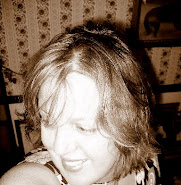21.jpg)


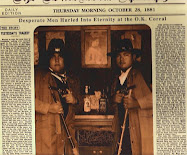
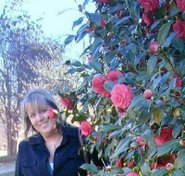



0 comments:
Post a Comment